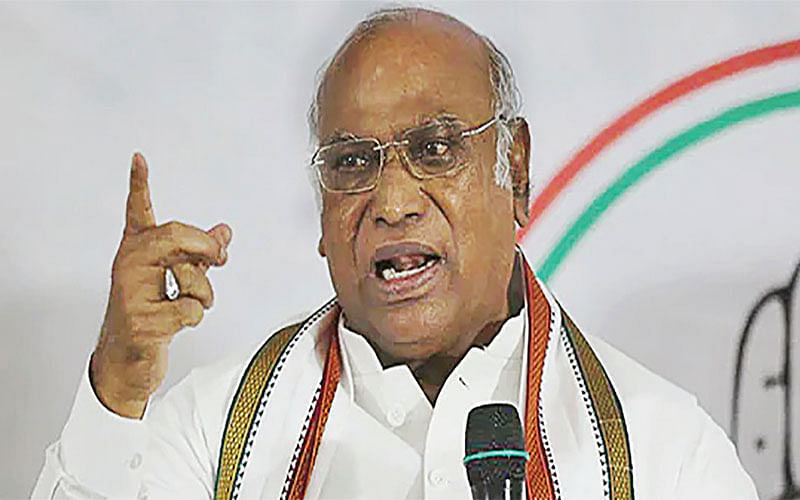Twenty-four years ago, in March 1998, Sonia Gandhi took a short walk from her residence to the Congress party headquarters on Akbar Road in New Delhi to take over as the party president from Sitaram Kesari. Earlier the Congress Working Committee had voted to request Kesari to quit the presidency. He was reluctant to do so and Sonia Gandhi’s assumption of the post was therefore in somewhat controversial circumstances. It is noteworthy that she had formally joined the party only in December 1997 but as Indira Gandhi’s daughter-in-law and Rajiv Gandhi’s widow only a nod was required from her to make almost all senior leaders to support her. She was, after all, the head of the party’s first family even if she was in seclusion after her husband’s assassination in 1991.
Now, twenty-four years later, an election has been held in which the two contestants for the party’s presidency have not been members of the Gandhi family. On October 26, the 80-year-old Mallikarjun Kharge who easily defeated Shashi Tharoor in the election will assume the post of the Congress party president. This development will naturally be followed by political parties and observers in India but it will also not go unnoticed abroad.
In both cases, the focus will be on the chance of Kharge acting independently as party leader. This is especially as it is widely believed that he was the Gandhis’ choice. It would also be watched if he shows the capacity to halt the almost free fall after 2014 of the once dominant political party in India. With India gaining greater weight on the global stage India’s internal political developments are naturally closely watched by foreign diplomats and decision-makers. Above all, they want to follow shifts, or potential shifts, in the power calculus of the country.
There is no doubt that the Congress party has never been in as bad a shape than it is at present. The ‘natural’ head of the party—Rahul Gandhi—had shown some verve before the 2019 election but the second crushing defeat at the hands of the BJP led by Prime Minister Narendra Modi threw him clearly dazed him. Taking responsibility he decided to give up the Party president’s post. That would have been fine in a ‘normal’ party but the Congress has not been one since Indira Gandhi split it in 1969. The party faction led by her completely finished the old guard and became the ‘real’ Congress. In the process though it became a ‘family’ party. Hence, one option before Rahul Gandhi in 2019 was to accept defeat, rally the faithful, and seek to form an effective opposition. He chose not to take this path. Instead, Sonia assumed the mantle of responsibility. The Congress party has ceded further ground over the past three years. It has lost in state elections and many of the old and established leaders have left the party fold. The last to do so was Ghulam Nabi Azad.
All this would be well known to foreign observers of the Indian scene. They would also be aware that over the past eight years, the BJP, under Modi, has not only sought to decisively enhance its political space but also spread its ideology in the country. The Congress party has not been able to successfully contest Modi in either area. Kharge has therefore an enormous task ahead of him. Perhaps the most crucial of these is to enhance the party’s presence in the crucial Hindi belt of which Uttar Pradesh is the most critical. The fact is that the party does not have an effective presence in UP. It can be argued that unless it begins to recover in the Hindi heartland, especially in UP, it cannot begin a true recovery process. In the Hindi speaking states it has lost the social groups which were its pillars of support and has no effective cadre strength either. Besides, the BJP has caught the imagination of large segments of Hindus who were earlier wedded to different thinking on political and economic issuers. Foreign observers will therefore watch Kharge’s strategies—of course if he decides to chart an independent course—especially in these states.
The Congress party recovery process has to begin with developing clear and firm ideological approaches. In recent years it has been displaying a degree of confusion on how to meet the BJP ideological challenge. In addition it has to also to fashion immediate, medium term and long-term political approaches so that it can take on BJP’s formidable election machine. Kharge’s first tests will be how the party performs in elections for the Gujarat and Karnataka assemblies. The former is scheduled for December this year while the latter is early summer of 2023. In Gujarat, Kharge will not only have to contend with the might of the BJP but also the attempts of Delhi Chief Minister Arvind Kejriwal led Aam Aadmi Party to chip into the traditional Congress vote. What foreign observers will focus on is if with a non-Gandhi heading the party the people are willing to take a greater look at it.
Meanwhile foreign attention will also be on Rahul Gandhi’s Bharat Jodo Yatra. The basic issue is if the Congress leader’s walk of 3500 km help him in transforming his image from a non-serious, if not reluctant, politician into one who is now committed to sustained political work. The luxury of frequent vacations is not available to Indian politicians. After all he should know that it was his great grandfather and India’s first Prime Minister Jawaharlal Nehru who is believed to have said “aaram haram hai”.







